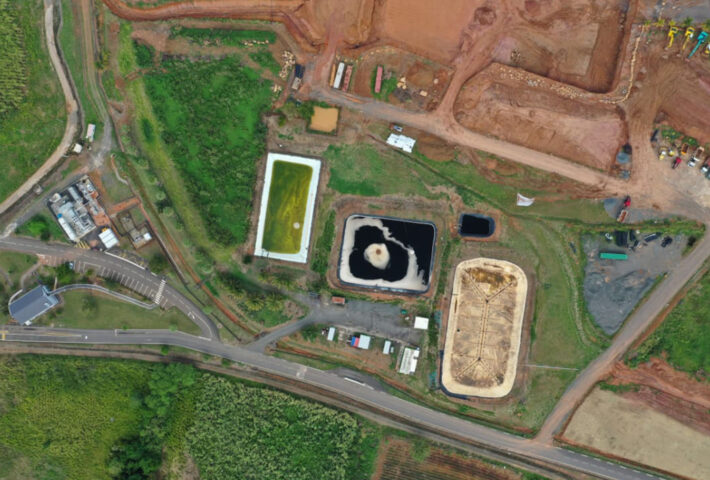
The treatment of leachate at the ENERGIPOLE ESPÉRANCE site, located in Guadeloupe, has intensified. A significant increase in the power of the biogas engine should be noted.
At the end of December 2020, a second leachate treatment station came into service. It is a semi-mobile station with a nominal capacity of 5 m3/h, packaged in two contiguous maritime containers. The treatment process comprises five successive steps.
First phase: biological treatment by forced aeration within the leachate storage basin itself with aeration capacity of the basin tripled by the installation of two new aerators with a capacity of 22 kWh. Second phase: a lamellar separator allowing the settling of suspended solids (SS). Third phase: a disc filter system with a filtration capacity of 55 µm to capture the remaining suspended solids. Fourth phase: treatment by microfiltration. The water flows through ultra-filtering membranes allowing the elimination of the finest particles, part of the organic matter, as well as some heavy components. Fifth phase: reverse osmosis. This process allows complete purification of the water (organic compounds and metals, as well as a large part of the minerals) for an output quality close to that of demineralised water. The installation of the new station and the maintenance of the old station in operation increase the leachate treatment capacity. In September 2020, ENERGIPOLE ESPÉRANCE had the complete looping of the biogas network carried out. This looping allows a considerable reduction of the negative pressure in the network, with a lower rate of O2, and a better capture of methane in the biogas. As biogas is of better quality, energy production increases. Since September 2020, the engine power went up to 1 MW with an increase of more than 60% in electricity production.

